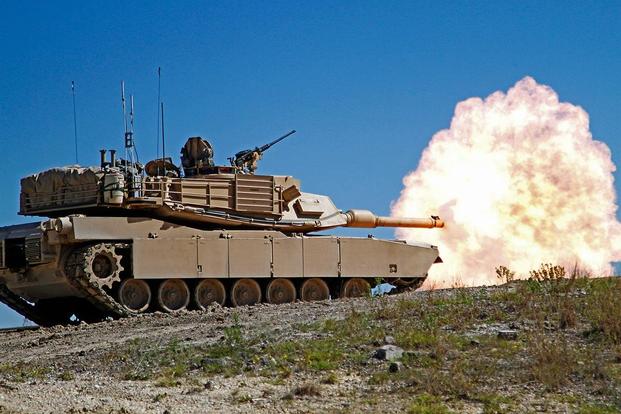The U.S. Army has 6,000 M1 Abrams tanks and for years has been saying that it doesn't need any more, but the service is requesting $558 million for more tanks in the latest budget.
"There's an industrial base piece to all of that," Maj. Gen. Neil Thurgood, the Army's deputy for acquisition and systems management, said Wednesday of the funding that will go to the General Dynamics Corps. plant in Lima, Ohio, the only tank manufacturer in the U.S.
Thurgood said the money would improve the Abrams' maneuverability and defenses, and also give its 120mm main smoothbore gun more range.
"You want to be able to shoot further than the person shooting at you," he said.
The main reason for funding more tanks was, "we want to preserve our national ability to maintain that technology base" in U.S. heavy industry if needed in time of war, Thurgood said.
Beginning in 2012, former Army Chief of Staff Gen. Raymond Odierno began testifying to Congress that the Army had more than enough tanks, even suggesting that the line at General Dynamics be frozen temporarily.
In 2012, Odierno testified that "we don't need the tanks," and said he'd rather use the money to spend on modernizing other weapons systems and platforms. "Our tank fleet is two and a half years old on average now. We're in good shape and these are additional tanks that we don't need," he said.
Last year, after Congress put more money for tanks back into the budget, Rep. Mac Thornberry, a Texas Republican and chairman of the House Armed Services Committee, said that keeping the line alive at General Dynamics showed that Congress was not a "rubber stamp."
"We made a judgment call" just as the Army was considering sending more tanks to Europe in response to the Ukraine crisis, Thornberry said. "That might be some evidence that Congress made the right call."
Thurgood was among several top Army officers who met in a roundtable session with defense reporters at the Pentagon on a range of issues stemming from the Defense Department's fiscal 2017 budget request presentation Tuesday.
Maj. Gen. Thomas A. Horlander, the Army's budget director, said the $148 billion budget request for the service would improve the readiness of the force -- the core concern for Army Chief of Staff Gen. Mark Milley.
Readiness is "consumable and it is cumulative," Horlander said, and the ability of the force to respond quickly in a crisis has been undermined by what he called the "oscillating" funding levels of recent years.
"It manifests itself in oscillating readiness levels" in which units "were unable to maintain the right amount of repair stocks and replenishment parts," he said. Without predictability in funding levels, he said, "you're always trying to catch up because you've lost what you built up previously."
Predictability in funding was especially critical for the readiness of the Army's rotational brigade formations for Europe, Kuwait and South Korea, said Maj. Gen. Walter E. Piatt, the Army's director for operations, readiness and mobilization and theformer deputy commander of U.S. Army Europe.
"We have to create a sustainable readiness model," Piatt said. In the past, "guys coming back -- we just went off a readiness cliff," he said. "We can't do that, the demand does not allow it. We have to maintain all formations at an acceptable level of readiness."
--Richard Sisk can be reached at Richard.Sisk@Military.com.




























